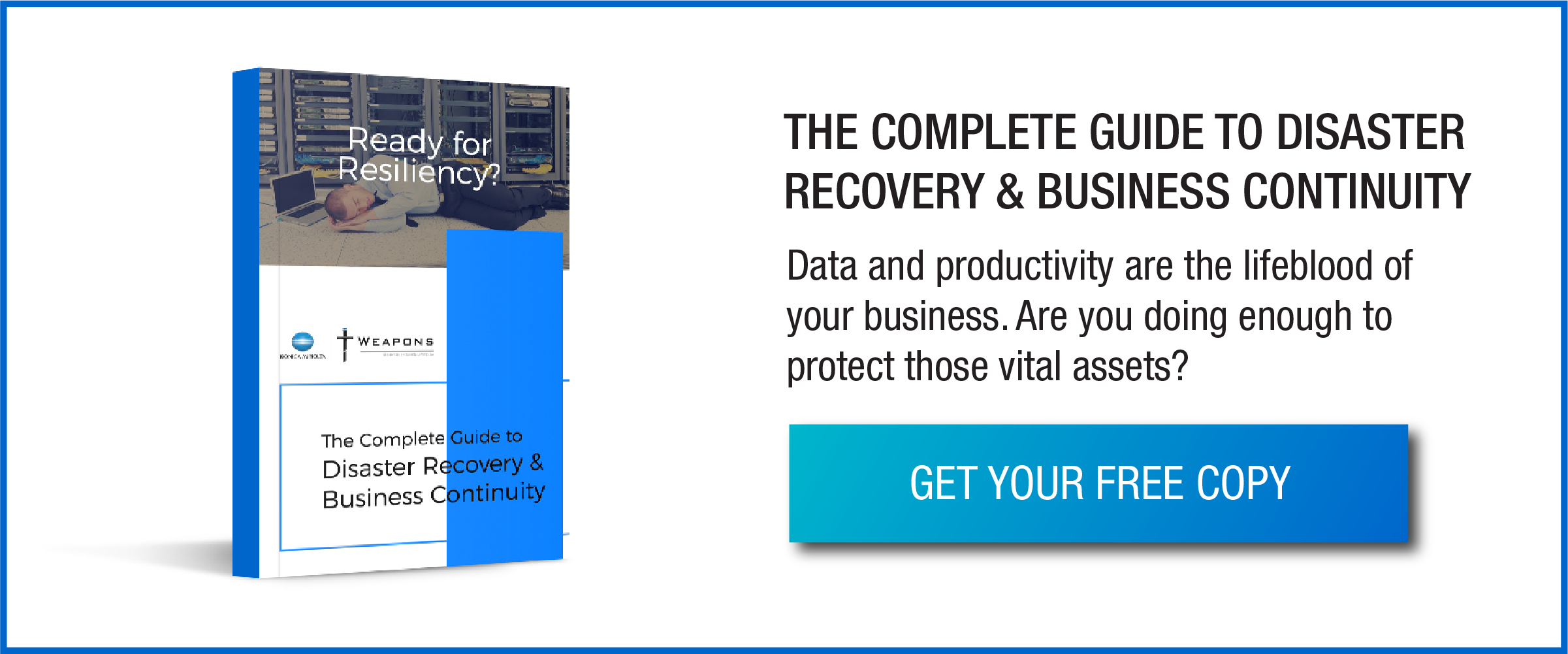Today’s consumers expect near 100% availability from the applications and services they use regularly. Anything less and your organization is at risk of a cascade of negative consequences.
The price of system downtime reaches far beyond a basic dollar amount. The true cost of an unplanned outage potentially includes lost customers and revenue, reduced employee productivity, and unrecoverable data loss.
Cyberattacks, such as the recent ransomware attack that targeted TransLink, Vancouver’s public transportation agency, tend to get the lion’s share of the blame for causing service disruptions, but in reality, there are a lot of natural events and human error which can disrupt business operations and cause unplanned outages.
With an array of possible threats, including fires, natural disasters, technology failures caused by missed patches, and even plain, old human error — think accidental file deletions — it is crucial to ensure you have a plan in place to mitigate loss and disruption — no matter what the cause.
When we talk about preventing loss of data, revenue, and employee productivity during and after a catastrophic event, there are two terms commonly tossed about: business continuity and disaster recovery.
On the surface, these practices sound like they are interchangeable, but when you dig down, there are significant differences that make both a necessity.
What is business continuity?
A comprehensive business continuity plan allows your business operations to continue at something approaching normal during and after a crisis. For maximum effectiveness, your business continuity plan should be finalized and tested well in advance of an actual crisis.
This proactive approach requires a business impact analysis to identify and predict the consequences of an outage on business-critical systems and processes. Once the impact analysis is complete, it will be easier to prioritize recovery efforts.
To ensure your business continuity plan is truly comprehensive, be sure to assemble a business continuity team with representation from up, down, and across the organization. Getting input from every level and every department makes it less likely that a crucial application or overlooked dependency will render the plan useless in an actual crisis.
What is disaster recovery?
A proactive disaster recovery strategy allows a company to recover critical information systems, remain operational, and prevent data loss after a crisis.
The backbone of a solid disaster recovery plan is the commitment to frequent, secure, and tested backups. It’s important to remember that your disaster recovery success relies on the last complete backup available.
In today’s highly distributed business environment, incorporating cloud disaster recovery solutions in your strategy is an excellent way to ensure you can restore data from anywhere. It’s also reassuring to know in the event of a disruption, your business-critical systems will automatically failover to a location on a completely different power grid or geographic region.
Why do you need both?
While the end game for both business continuity and disaster recovery is essentially the same — protect data and keep the business operating — the specifics of each strategy means they work in concert to achieve the common goal.
What it really boils down to is that disaster recovery is just one part of an organization’s overall business continuity strategy. Where business continuity involves the entire organization and sustaining operations, disaster recovery focuses on getting and keeping the IT systems needed to support and run company operations back up and running with little to no loss of data.
Why should business continuity and disaster recovery be priorities?
Any business leader that has weathered a major outage or ransomware attack can attest to the need for a business continuity and disaster recovery strategy. How fervently they attest to it probably depends on whether or not they had a plan in place at the time.
Although it seems unimaginable that an organization of any size would not proactively safeguard its data and operations, it does happen. Some of the common reasons companies fail to do their business continuity due diligence include:
- Cost: Yes, the technology can be expensive to acquire and maintain, but when compared to the potential costs of cleaning up after a cyberattack or disaster without a recovery plan in place, it’s well worth the investment.
- Complex IT infrastructure: Many organizations have highly complex IT infrastructures with tons of moving parts. Creating then implementing a cohesive business continuity plan that ensures end-to-end operations coverage for dozens of discrete systems is incredibly daunting and time-consuming.
- Hard to get buy-in from senior management: In too many cases, upper management would rather deal with a disaster if and when the need arises rather than proactively plan for recovery. It’s likely they only make this mistake once.
- Legacy systems: Legacy systems are the perennial bane of every IT team. It’s much easier to pretend a disaster won’t affect your organization than try to build a recovery strategy for the out-of-date, unsupported, not-easily-integrated technology of yore.
Why does every business need a continuity plan that includes disaster recovery?
A business continuity plan with disaster recovery capabilities should be standard operating procedure in every organization. The benefits of proactively preventing data loss, protecting sensitive company and personal data from exposure, and maintaining normal-ish operations until a crisis is resolved far outweigh any imaginary savings you get while pretending your company is immune from disaster.
It’s easy to dangle the protect your revenue “carrot,” but planning for a crisis also provides the less-mentioned benefits of maintaining employee productivity, upholding compliance and regulatory requirements, protecting the company’s good reputation, and keeping customer trust.
How can IT Weapons help?
As a top-rated Canadian managed services provider with more than two decades of experience, IT Weapons offers business continuity support with everything from on-premises and public, private, and hybrid cloud backup to SaaS protection and all-in-one backup and disaster recovery capabilities.
Download this IT Weapons e-book, “The Complete Guide to Disaster Recovery & Business Continuity” to learn more ways to keep your business operations up and running before, during, and after a crisis.





